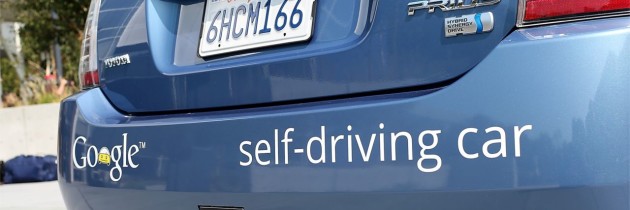In 2016, We Will See More Self-Driving Cars and Safer Roads (Plus More Daredevil Videos)
This article original posted on recode.net
Robot cars have lurked on our roads for years. Thanks to Google and Tesla, the machines stepped out of the shadows in 2015.
Expect more assertive actions by the big tech companies next year. Detroit’s carmakers, which have toyed with “self-driving” capabilities for some time, are also likely to make features like self-parking, lane correction and lane changing more widely available across their fleets as they feel the heat from the likes of Apple and Google.
All of this, however, depends on getting the regulatory nod. The federal government has expressed some willingness to catch up on autonomous rules. Yet California, home to the most self-driving vehicles, released initial laws this month that essentially bar fully driverless vehicles, much to Google’s chagrin.
That tense dance between regulators and tech will continue. Additionally, the industry will need to address lingering insurance, supply and cost issues necessary to get more autonomous vehicles on streets.
In 2016, Jeffrey Miller, an autonomous expert with the tech association IEEE, said ambitious private companies may force lawmakers’ hands. “We are hopefully going to see some regulations arise, [as] these forward-thinking technology companies are just going to start releasing things otherwise.”
What Rubber Hit the Road This Year
Google’s homemade clown cars finally moved out of the moonshot lab, arriving on streets in California and Texas this summer. Thirty of the models are on the road as of November — 23 in Mountain View, Calif., and seven in Austin, Texas — in addition to 30 of Google’s rigged-up Lexus SUVs.
The Google X unit also recruited its inaugural business chief, former Hyundai exec John Krafcik, in September.
Meanwhile, Tesla leapfrogged Detroit to become the first carmaker to roll out widespread self-driving features with its autopilot software in October. Tesla’s tech, an over-the-air push, allows the carmaker to instantly upgrade autonomous tools to thousands of cars (something Google can’t currently do).
The software also allows Tesla owners to push the tech beyond its safety horizons — something several, including this daring fellow, did: see video on youtube.
Where the Road Leads
To keep ahead of Detroit, Tesla plans to ramp up its hiring for autonomous experts in 2016. Uber will do the same, along with the traditional carmakers and automotive suppliers.
Faced with roadblocks in California, Google is likely to turn more to Texas and perhaps additional states with welcoming laws and weather. (Heavy rain and snow still give self-driving cars a tough time.)
Google will also need to make some advances in business partnerships, so its tech lead doesn’t slip through its fingers. The reported deal with Ford is not expected to arrive at CES, according to a source familiar with Google. But the Internet giant is certainly talking to auto OEMs about arrangements for autonomous fleets. These are deals Google’s self-driving car team will need to operate as a standalone Alphabet company, which it is likely to become in 2016.
Part of Google’s tech edge comes from the communication within its own fleet. That could extend to everyone else next year with the arrival of vehicle-to-vehicle communication, given a uniform standard for the industry. The Department of Transportation has pledged to usher this in by the time President Obama leaves office in January 2017.
If executed properly, this tech, paired with more self-driving features, will make our roads far safer places. “Every car will talk to each other,” Jeffrey Owens, CTO for automotive supplier Delphi, said at a recent press event. “If someone is zooming at 60 miles an hour, you’ll know that you can get T-boned.” Or your car will know, and respond accordingly.
Of course, with each new robot feature, there will be drivers who test them. May we only see benign YouTube videos of these tests. Otherwise, 2016 could be the year with the first deadly self-driving car accident — and Lord knows what happens then.



